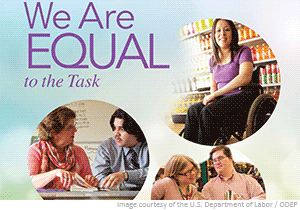
Addressing compliance with the Americans with Disabilities Act (ADA)/ADA Amendments Act (ADAAA) has become one of the notable challenges employers face in the workplace today. Congress enacted the ADAAA, implemented in 2009, to reinforce their intent for a broader application of the ADA to employees with disabilities. Congress also directed the Equal Employment Opportunity Commission (EEOC) to revise its regulations to comply with the new law and to make it easier for an employee to qualify for protection. This legislation, along with the revised EEOC rules, has significantly expanded the number of employees who qualify for ADA protection.
At the same time, lawmakers clearly stated that the focus for the employer should be on implementing the interactive process needed to find an accommodation – not on "extensive analysis" of whether a leave exists or the extent of the employee's disability – as long as the basic legal criteria are met.
As a result of these changes, not only do more employees fall under ADA protection, but there is a corresponding need for employers to deploy the interactive process much more frequently. For many employers, it can be valuable to review their current organizational framework for compliance and ensure it meets changing business and legal needs.
Here are five important steps I believe are critical for creating an organizational framework for ADA compliance, including:
- Developing a management strategy for compliance, with clear accountability throughout the organization; appointing an organizational leader to “own” the issue
- Identifying the right stakeholders to participate in program development
- Developing the written administrative program, including process flow, roles and responsibilities
- Identifying needs for communications, data collection and tracking
- Identifying specialty resources – internal and external – to support the ADA/ADAAA interactive and accommodation process
Let's look more closely at step 1: developing a management strategy for compliance and determining organizational ownership. The potential high impact of ADA/ADAAA on the organization calls for C-Suite leadership in setting the corporate vision and in requiring accountability throughout the organization. Often, this begins by identifying an internal owner for the ADA compliance process, and directing development of the detailed framework needed for compliance. This ownership/leadership usually resides with Human Resources (HR) and/or in-house legal counsel, and often it is a shared responsibility. A close partnership between HR and legal can work well to define the key legal and HR issues, in order to jointly direct development of policies and processes.
When the ADA organizational leadership and compliance framework is in place, periodic reporting to senior executives on program trends and emerging issues should occur. The impact of growing numbers of worksite accommodations could have a significant impact in some industries, affecting operations staffing and impacting an organization's ability to get the work done.
In upcoming posts, I will dig deeper into the other steps identified as important for a successful compliance framework. In the meantime, please post your questions or thoughts in the comments.
Denise Fleury, SVP, Disability and Absence Management